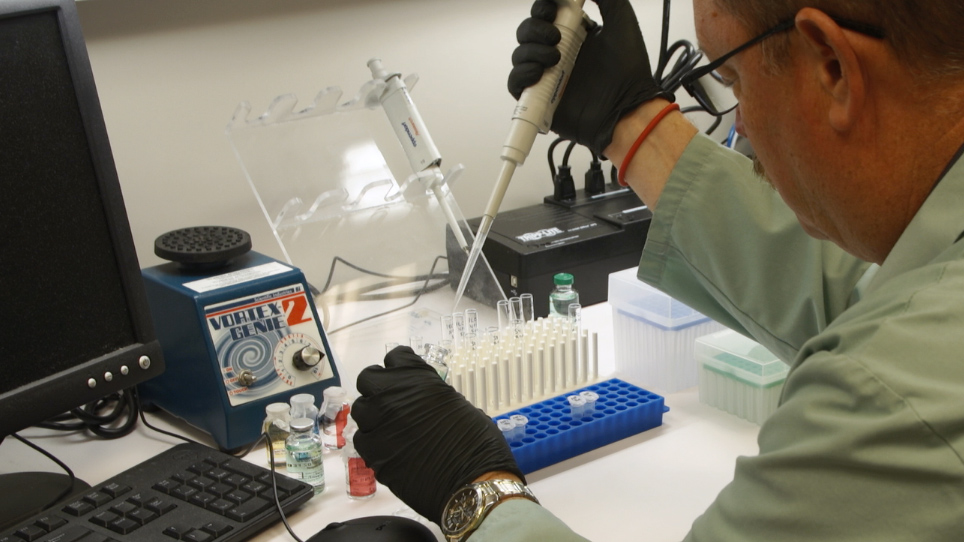UV-Visible Spectroscopy for Monitoring Fibrin Clot Formation
Transkript
In response to a wound, a series of enzymatic reactions initiate the formation of an insoluble protein network — a fibrin clot — which seals the blood vessels and prevents excess blood loss.
To monitor fibrin clot formation in vitro, begin with a multi-well plate containing a clot formation buffer. The buffer comprises calcium ions — a cofactor — and fibrinogens — soluble glycoproteins essential for clotting.
Treat the well with the thrombins — a proteolytic enzyme that initiates the reaction.
Insert the plate into a UV-visible spectrophotometer. Illuminate the well with light with a wavelength of 350 nanometers, and record the solution's absorbance at regular intervals.
Initially, the incident light passes through the clear solution containing soluble fibrinogens, showing minimal light absorbance and maximum transmittance. The detector collects the transmitted light and generates spectra showing the absorbance versus time, correlating with the solution's turbidity.
Over time, in the presence of calcium ions, thrombin cleaves the soluble fibrinogens to release fibrins. These insoluble fibrins interact to form a three-dimensional network of fibrin — a clot — which makes the solution turbid. The turbid solution containing the fibrin clot absorbs more light, causing a decrease in the intensity of the transmitted light.
Analyze the UV-visible spectra; the increase in the absorbance value over time correlates with an increase in the solution's turbidity, suggesting rapid fibrin clot formation.



